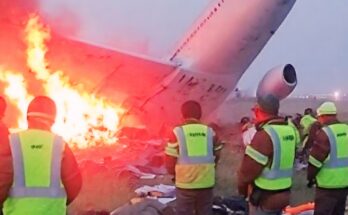
The KF-21 Boramae is South Korea’s most ambitious aerospace project to date, representing the country’s determination to achieve self-reliance in advanced defense technology. Developed by Korea Aerospace Industries (KAI) in partnership with Indonesia, the KF-21 is a next-generation multirole fighter designed to bridge the gap between fourth and fifth-generation aircraft. Its development marks a significant milestone not only for South Korea’s defense industry but also for its standing in global aviation.
The program was officially launched in 2015, after years of debate and feasibility studies. South Korea sought to create an aircraft that could eventually replace its aging fleet of F-4 Phantom and F-5 Tiger fighters, while also reducing reliance on foreign suppliers. Indonesia agreed to participate as a junior partner, contributing around 20 percent of the costs in exchange for access to technology and eventual production rights. The result is the KF-21 Boramae, a fighter that blends advanced avionics, stealth features, and modern weapon systems.
From a design standpoint, the KF-21 bears similarities to the U.S. F-35 in its sleek lines and radar-reducing contours, though it is not classified as a full fifth-generation aircraft. Instead, it is often referred to as a “4.5 generation” platform. This means it incorporates some stealth technologies, such as reduced radar cross-section and internal weapons bays, but does not achieve the same level of low observability as aircraft like the F-22 or F-35. The KF-21 instead emphasizes cost efficiency, versatility, and ease of maintenance, making it attractive for countries unable to afford the most expensive stealth fighters.
Performance-wise, the Boramae is designed to carry a wide range of air-to-air and air-to-ground munitions. It is expected to be capable of deploying beyond-visual-range missiles, precision-guided bombs, and potentially indigenous weapon systems developed by South Korea. Powered by twin General Electric F414 engines, the same type used in the F/A-18 Super Hornet, the aircraft is projected to reach speeds of Mach 1.8 and operate at altitudes of over 50,000 feet. With these specifications, the KF-21 will be well-suited for both defensive and offensive missions.
Testing of the prototype began in 2022, with the first flight successfully carried out in July of that year. Since then, multiple prototypes have been undergoing rigorous flight trials to refine performance, avionics, and weapons integration. Production is expected to start in the latter half of the decade, with the South Korean Air Force scheduled to receive the first operational units by the mid-2030s.
Beyond military capability, the KF-21 program holds major industrial significance. It has fostered domestic innovation, created thousands of jobs, and positioned South Korea as one of the few nations capable of designing and building a modern fighter jet. The program also serves as a catalyst for technological spin-offs in fields such as aerospace engineering, radar systems, and advanced materials.
The KF-21 Boramae embodies South Korea’s strategic vision: to safeguard its security with homegrown technology while building an export product that could appeal to nations seeking an advanced yet affordable fighter. If successful, it will stand as a symbol of national pride and technological achievement, proving that South Korea can compete in one of the most demanding arenas of modern industry.


